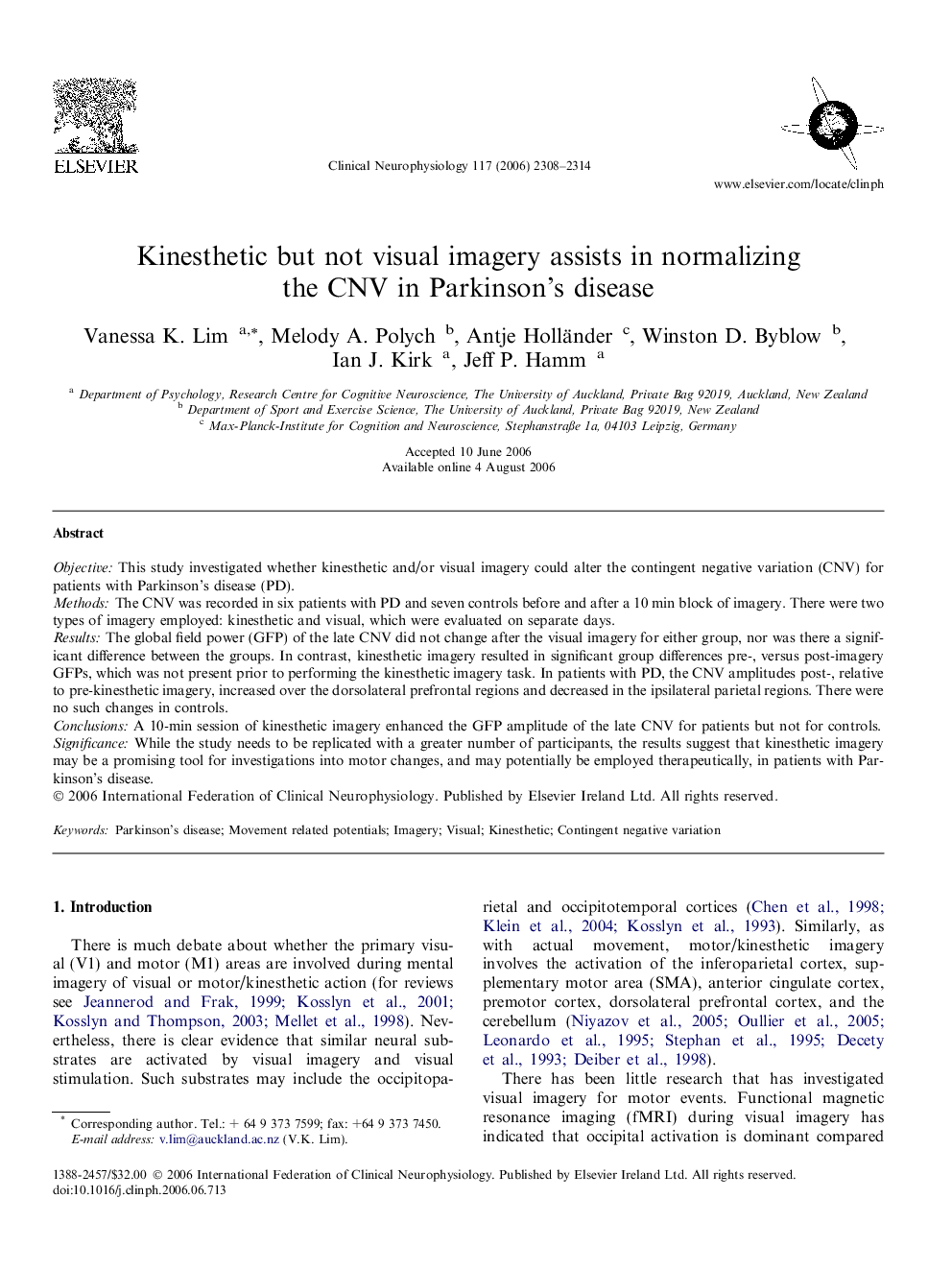| Article ID | Journal | Published Year | Pages | File Type |
|---|---|---|---|---|
| 3047682 | Clinical Neurophysiology | 2006 | 7 Pages |
ObjectiveThis study investigated whether kinesthetic and/or visual imagery could alter the contingent negative variation (CNV) for patients with Parkinson’s disease (PD).MethodsThe CNV was recorded in six patients with PD and seven controls before and after a 10 min block of imagery. There were two types of imagery employed: kinesthetic and visual, which were evaluated on separate days.ResultsThe global field power (GFP) of the late CNV did not change after the visual imagery for either group, nor was there a significant difference between the groups. In contrast, kinesthetic imagery resulted in significant group differences pre-, versus post-imagery GFPs, which was not present prior to performing the kinesthetic imagery task. In patients with PD, the CNV amplitudes post-, relative to pre-kinesthetic imagery, increased over the dorsolateral prefrontal regions and decreased in the ipsilateral parietal regions. There were no such changes in controls.ConclusionsA 10-min session of kinesthetic imagery enhanced the GFP amplitude of the late CNV for patients but not for controls.SignificanceWhile the study needs to be replicated with a greater number of participants, the results suggest that kinesthetic imagery may be a promising tool for investigations into motor changes, and may potentially be employed therapeutically, in patients with Parkinson’s disease.
